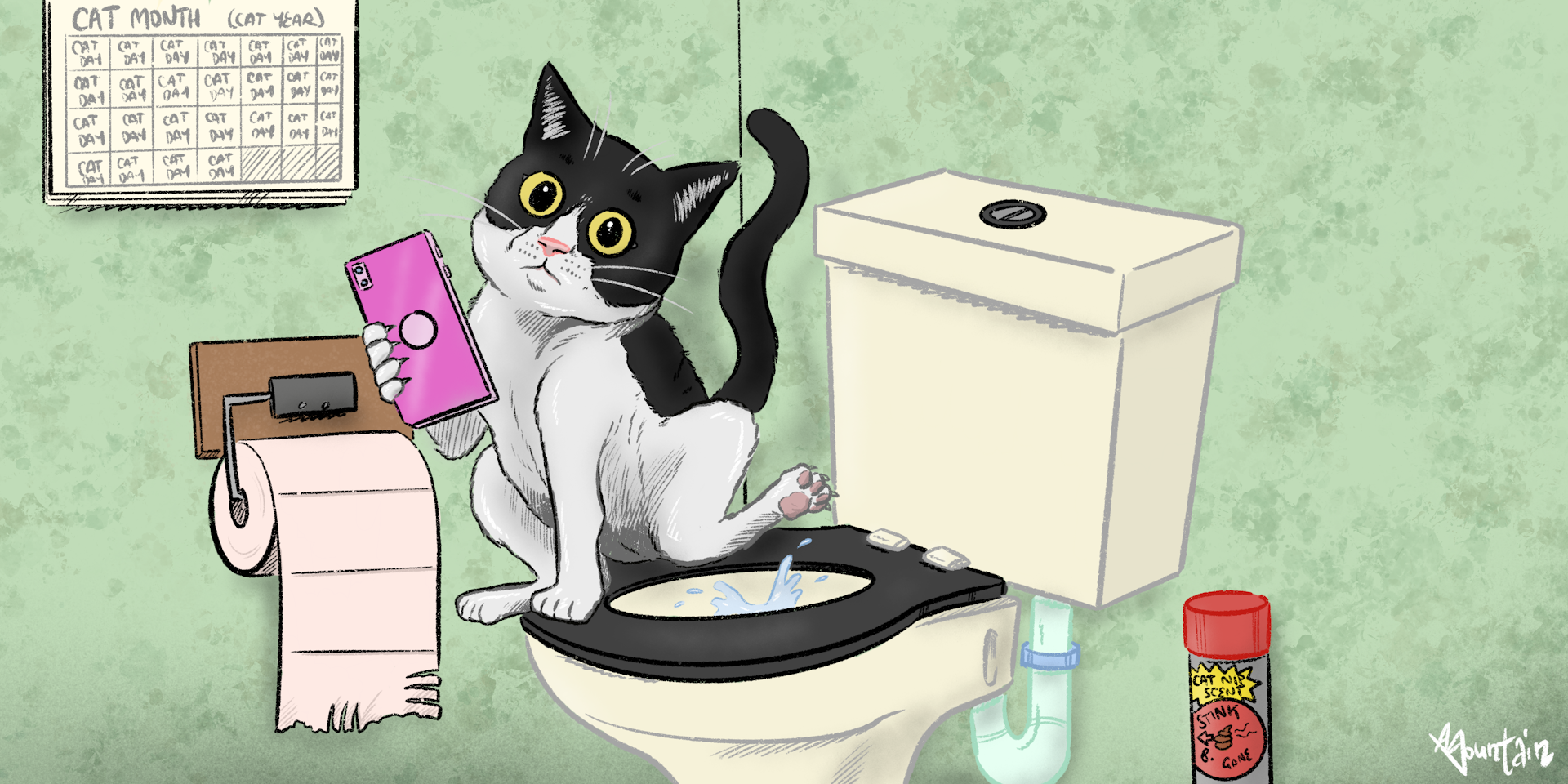Avoid Flush Cat Poop Down Your Toilet - Maintain Your Home's Pipe System
Avoid Flush Cat Poop Down Your Toilet - Maintain Your Home's Pipe System
Blog Article
Do you find yourself searching for critical info concerning Don’t flush cat feces down the toilet?

Intro
As feline proprietors, it's vital to bear in mind just how we get rid of our feline friends' waste. While it may appear convenient to flush feline poop down the bathroom, this method can have destructive consequences for both the environment and human health and wellness.
Alternatives to Flushing
Thankfully, there are safer and a lot more liable ways to dispose of feline poop. Think about the adhering to options:
1. Scoop and Dispose in Trash
One of the most typical method of disposing of feline poop is to scoop it into a naturally degradable bag and throw it in the trash. Be sure to utilize a devoted trash inside story and throw away the waste promptly.
2. Use Biodegradable Litter
Select eco-friendly pet cat clutter made from products such as corn or wheat. These litters are eco-friendly and can be safely dealt with in the garbage.
3. Bury in the Yard
If you have a lawn, think about hiding pet cat waste in an assigned area away from veggie yards and water resources. Be sure to dig deep sufficient to avoid contamination of groundwater.
4. Set Up a Pet Waste Disposal System
Purchase an animal waste disposal system specifically developed for cat waste. These systems make use of enzymes to break down the waste, lowering smell and environmental influence.
Wellness Risks
In addition to ecological worries, flushing pet cat waste can likewise pose health and wellness risks to human beings. Cat feces might contain Toxoplasma gondii, a parasite that can cause toxoplasmosis-- a possibly severe disease, especially for pregnant females and people with weakened immune systems.
Ecological Impact
Flushing pet cat poop introduces hazardous virus and parasites into the water supply, positioning a substantial danger to marine ecological communities. These impurities can adversely affect aquatic life and concession water high quality.
Verdict
Responsible pet ownership extends past supplying food and shelter-- it additionally includes correct waste administration. By refraining from purging cat poop down the commode and choosing alternative disposal methods, we can minimize our ecological impact and secure human health and wellness.
Why Can’t I Flush Cat Poop?
It Spreads a Parasite
Cats are frequently infected with a parasite called toxoplasma gondii. The parasite causes an infection called toxoplasmosis. It is usually harmless to cats. The parasite only uses cat poop as a host for its eggs. Otherwise, the cat’s immune system usually keeps the infection at low enough levels to maintain its own health. But it does not stop the develop of eggs. These eggs are tiny and surprisingly tough. They may survive for a year before they begin to grow. But that’s the problem.
Our wastewater system is not designed to deal with toxoplasmosis eggs. Instead, most eggs will flush from your toilet into sewers and wastewater management plants. After the sewage is treated for many other harmful things in it, it is typically released into local rivers, lakes, or oceans. Here, the toxoplasmosis eggs can find new hosts, including starfish, crabs, otters, and many other wildlife. For many, this is a significant risk to their health. Toxoplasmosis can also end up infecting water sources that are important for agriculture, which means our deer, pigs, and sheep can get infected too.
Is There Risk to Humans?
There can be a risk to human life from flushing cat poop down the toilet. If you do so, the parasites from your cat’s poop can end up in shellfish, game animals, or livestock. If this meat is then served raw or undercooked, the people who eat it can get sick.
In fact, according to the CDC, 40 million people in the United States are infected with toxoplasma gondii. They get it from exposure to infected seafood, or from some kind of cat poop contamination, like drinking from a stream that is contaminated or touching anything that has come into contact with cat poop. That includes just cleaning a cat litter box.
Most people who get infected with these parasites will not develop any symptoms. However, for pregnant women or for those with compromised immune systems, the parasite can cause severe health problems.
How to Handle Cat Poop
The best way to handle cat poop is actually to clean the box more often. The eggs that the parasite sheds will not become active until one to five days after the cat poops. That means that if you clean daily, you’re much less likely to come into direct contact with infectious eggs.
That said, always dispose of cat poop in the garbage and not down the toilet. Wash your hands before and after you clean the litter box, and bring the bag of poop right outside to your garbage bins.
https://trenchlesssolutionsusa.com/why-cant-i-flush-cat-poop/

Do you appreciate reading about How to Dispose of Cat Poop and Litter Without Plastic Bags? Try leaving feedback directly below. We will be pleased to listen to your thoughts about this article. We hope that you come back again before long. For those who enjoyed our post plz make sure you remember to pass it around. Bless you for your time. Please check our site back soon.
Schedule Now! Report this page